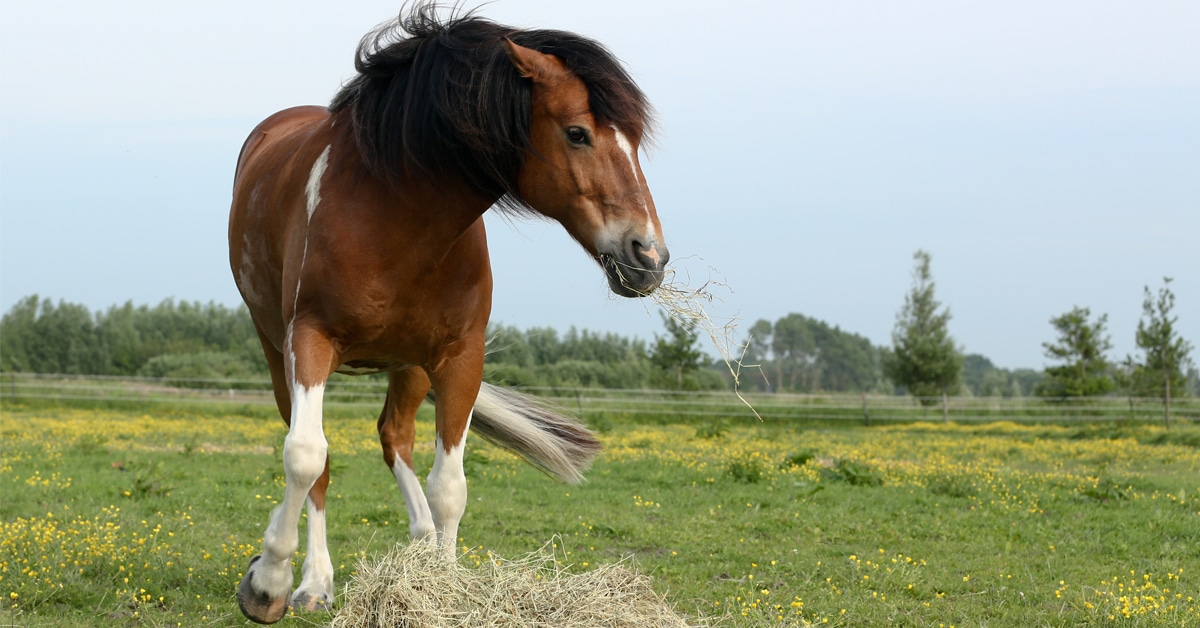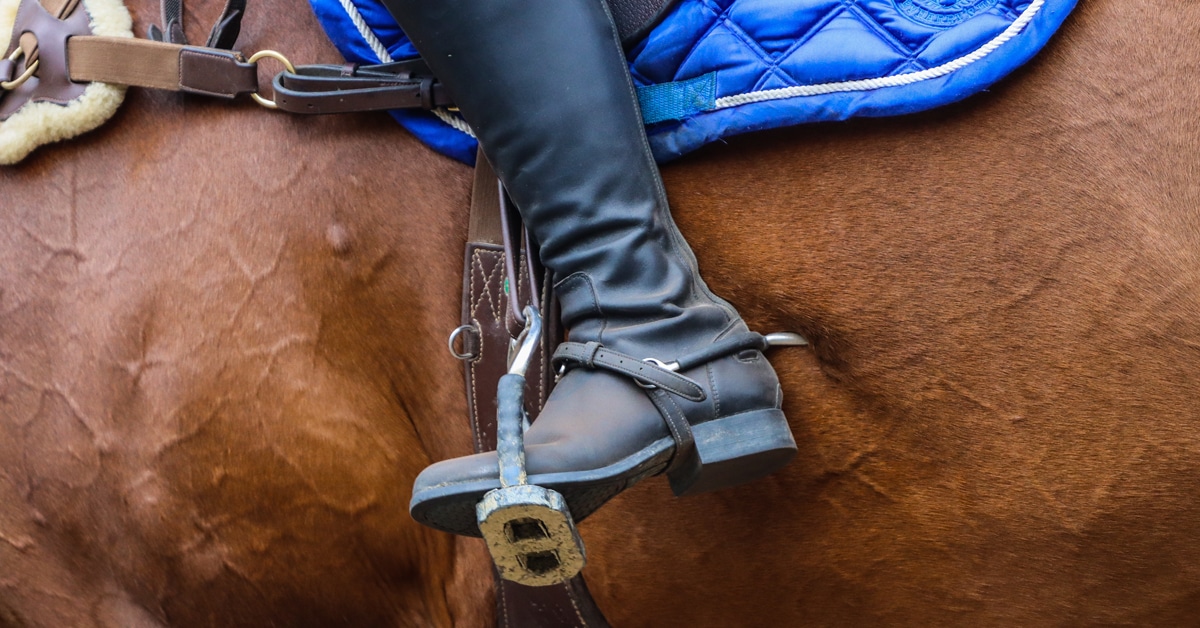About a year after Melissa Ryan purchased Snickers, a Quarter Horse, for her daughter’s ranch riding, they started having lameness issues with the mare.
The 10-year-old Snickers would be lame on different legs, with no heat and very little swelling. She was sore to the touch on visits from their equine massage therapist. “Every time we’d think we got one thing sorted out, she’d come up lame for no reason whatsoever,” Ryan said. “We couldn’t really pinpoint it.”
Ryan is based in Guelph and spent nearly two years trying to figure out what was causing the lameness issues, with vet visits, x-rays, and a full body scan. One day, Ryan happened to be speaking with an equine chiropractor who asked if they’d had Snickers tested for Lyme disease.
“With climate change, tick range is expanding northward.”
“I would have never thought that was what it was,” Ryan said. “I’ve never seen a tick on her.” She pushed to get the test done (her vet didn’t want to test for it), and it came back positive. Snickers had equine Lyme disease.
Equine Lyme disease has been nicknamed ‘the great imitator’ as its symptoms can mimic many other diseases. It’s frustrating for horse owners to deal with, particularly because of a lack of understanding of the disease.
“What we’ve found through this is there’s not a lot of information,” Ryan said.
So what is known about equine Lyme disease, its symptoms, diagnosis, and treatment options? And as human Lyme disease becomes more prevalent throughout Canada, is the same true of equine Lyme disease?
Symptoms
Horse Sport spoke with Alison Moore DVM, the lead veterinarian of Animal Health and Welfare with the Ontario Ministry of Agriculture, Food and Rural Affairs, to learn more about this complex disease.
According to Moore, there are three confirmed symptoms of equine Lyme disease:
- neuroborreliosis – a central nervous system disorder that can present as muscle waste or a ‘drunken gait’
- uveitis – inflammation of the eye
- cutaneous pseudolymphoma – skin lumps all over the horse
Positive cases of equine Lyme disease have been disagnosed from any one of those three symptoms. There are also other, more common symptoms that are typically seen by veterinarians, including:
- signs of shifting lameness
- hyperesthesia (sensitivity to touch)
- behavioural change
- performance issues
- chronic weight loss
The problem is that those symptoms are “pretty common to a lot of things,” Moore said. “That’s why this is challenging. You have to try to rule out other causes for those signs.”
Diagnosis
Lyme disease is caused by the bacterium Borelia burgdorferi, which is transmitted through a bite from an infected tick. In Canada, the carrier tick is Ixodes scapularis, more commonly known as a black-legged or deer tick.

An adult deer tick, commonly found in Canada. (Scott Bauer-USDA/commons.wikimedia.org)
When determining diagnosis of Lyme disease, Moore said, you look at whether the horse is in an area that’s endemic to ticks, what the prevalence of the Borelia bacterium is in that area, whether the signs are consistent with Lyme, whether other causes can be ruled out, “and then there’s the blood test.”
There are two different options for the blood test: a SNAP 4DX test, which is inexpensive and can be performed on a farm or in a veterinary clinic. Although convenient, the SNAP test only provides a negative or positive, not a quantitative result. The second option is the Multiplex Test, which is done by drawing blood and sending a sample to Cornell University in New York. The Multiplex test can distinguish whether the positive result is from early vs chronic infection, and it also provides quantitative antibody results, which you can monitor through repeated tests to gauge response to treatment.
Both blood tests can tell you if the horse has been exposed to the Borelia organism, Moore said, but it doesn’t tell you whether the horse has the disease or not. “So you have to put it into context.”
Treatment Options and Outcomes
The standard treatment is four to six weeks of antibiotic therapy. Additional rounds of antibiotic therapy may be used after that, depending on the horse’s antibody levels. However, it’s important to note that some treatments can have an effect of their own on joints, so there may be an improvement regardless of whether the horse has Lyme disease or not.
As for prognosis, Moore said, “the consensus is the longer it’s been going on, the harder it is to get a full, complete recovery. Horses more in the acute phase can have a good recovery with treatment.”
Once a horse has had Lyme disease, it doesn’t make them immune to it.
After Ryan’s mare, Snickers, got her positive Lyme test, they treated her for 30 days with antibiotics in December 2023. Within three weeks, Ryan said, all of Snicker’s symptoms were gone, and she’s been sound since then.
The vet retested her numbers, which weren’t as low as they would have liked, and said that they could do another round of antibiotics. Ryan and the vet have decided for now to wait and hope that the mare continues to be symptom-free. Ryan’s daughter is finally able to ride her horse, and “she’s very excited that she’s got her horse back.”
Once a horse has had Lyme disease, it doesn’t make them immune to it. Even with successful treatment, a horse can be reinfected later on, so continued monitoring for a relapse of symptoms is necessary for the rest of the horse’s life.
Is Lyme Disease on the Increase Among Horses?
The range of the black-legged tick has been expanding in recent years and now can be found in Ontario, Quebec, Manitoba, the Atlantic provinces, and even as far west as Alberta and Saskatchewan. They’re also creeping further north.
“With climate change, tick range is expanding northward,” Moore said. “I think it’s safe to say that most areas are going to be exposed to the tick, and with it comes Borelia.”
Moore said that we will probably see more issues down the road related to Lyme – but experts have found that in areas “where we know that the tick areas are high, a number of them are going to be exposed to it, but the number of horses with Lyme disease is actually pretty low.”
The surveillance of Lyme and other tick-born diseases is increasing as well, Moore said. There’s more reporting of the disease than there was before. It’s probably “a combination of things” that’s making us see more cases.
Prevention
While there isn’t a vaccine for equine Lyme disease, veterinarians who practice in Lyme endemic areas have been using canine Lyme vaccines for horses.
Using the canine Lyme vaccine on horses has be shown to be safe in some research trials, Moore said. However, the antibody response it creates doesn’t last very long, so it has to be readministered. For that reason, use of the vaccine “would probably be reserved for heavily endemic areas.”
Environmental management can also help with prevention, Moore said. Horses that live outside are going to be exposed, but the risk of exposure can be reduced by keeping paddocks and pasture grasses low or mowed, as female ticks will climb up as high as they can and then jump to the belly or legs of the horse.
Overall, Moore said, “It is a complicated disease; there are still a number of things we don’t know about it. It’s kind of a work in progress in a way. It needs more research, but research is always hard to come by.”
The Latest









